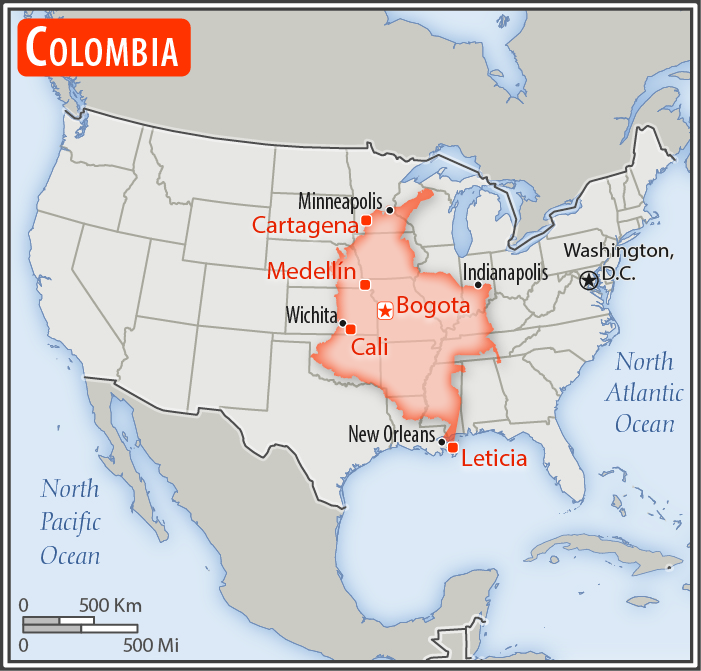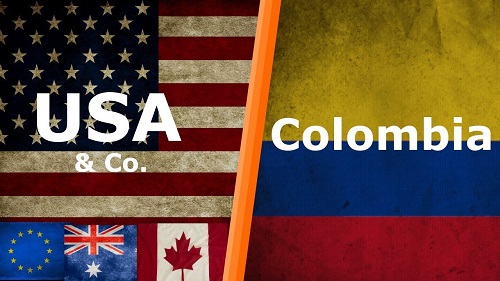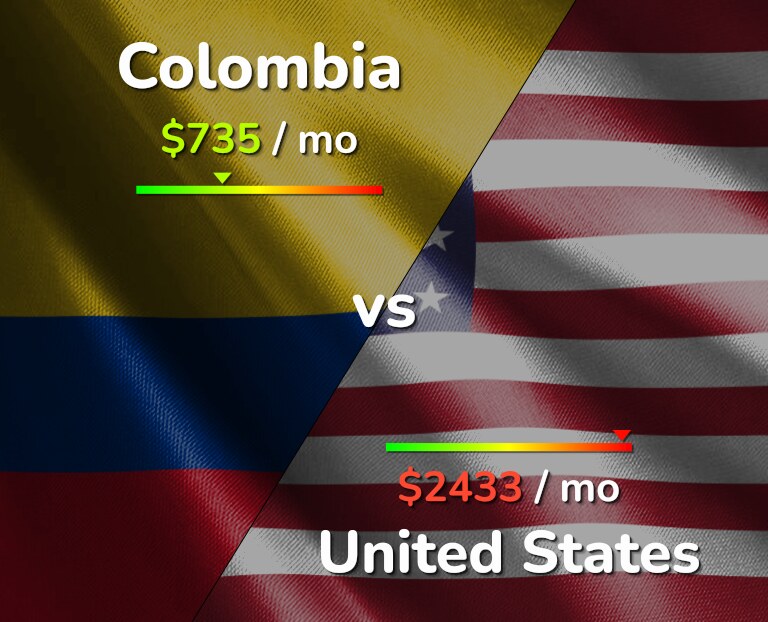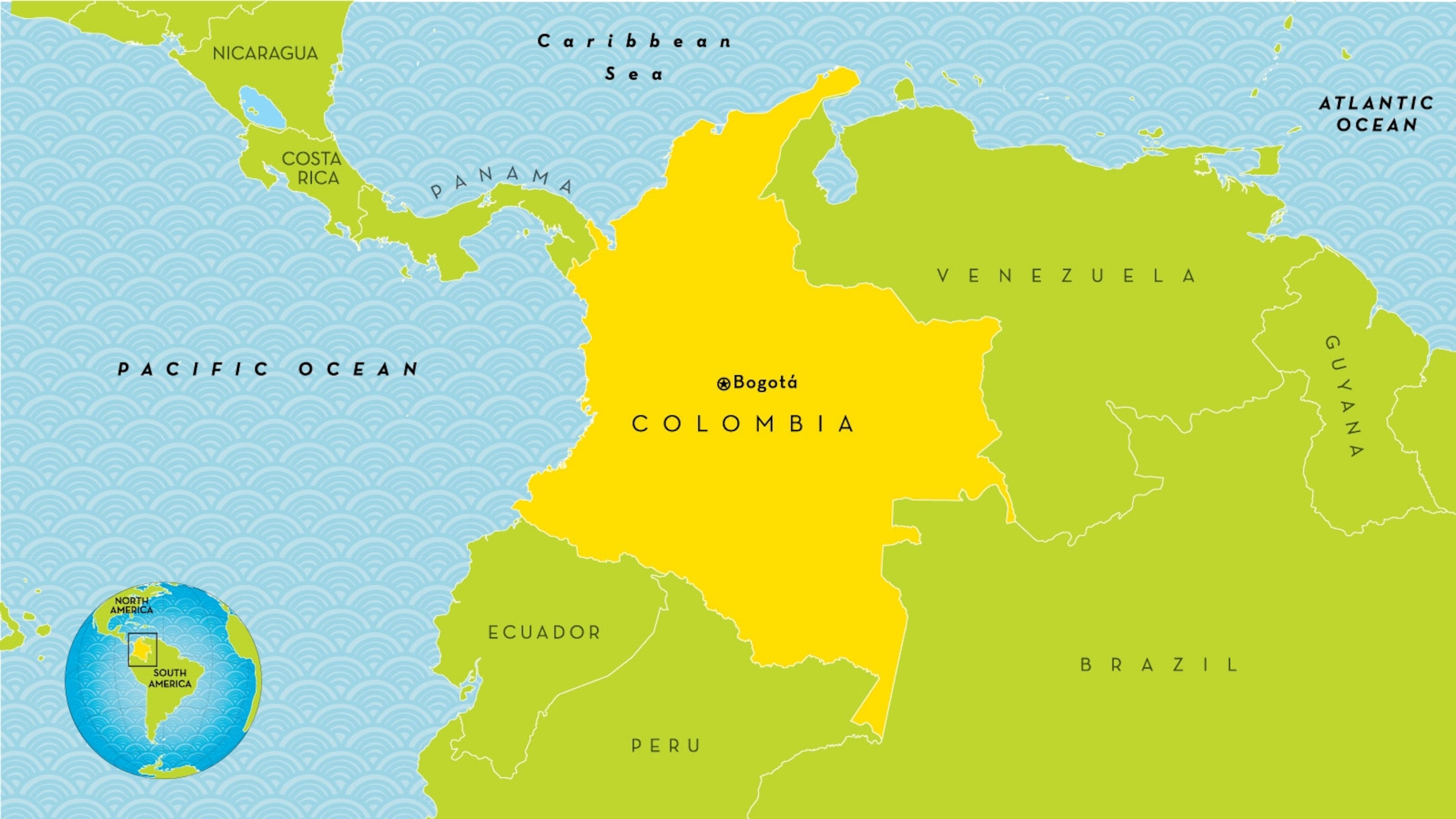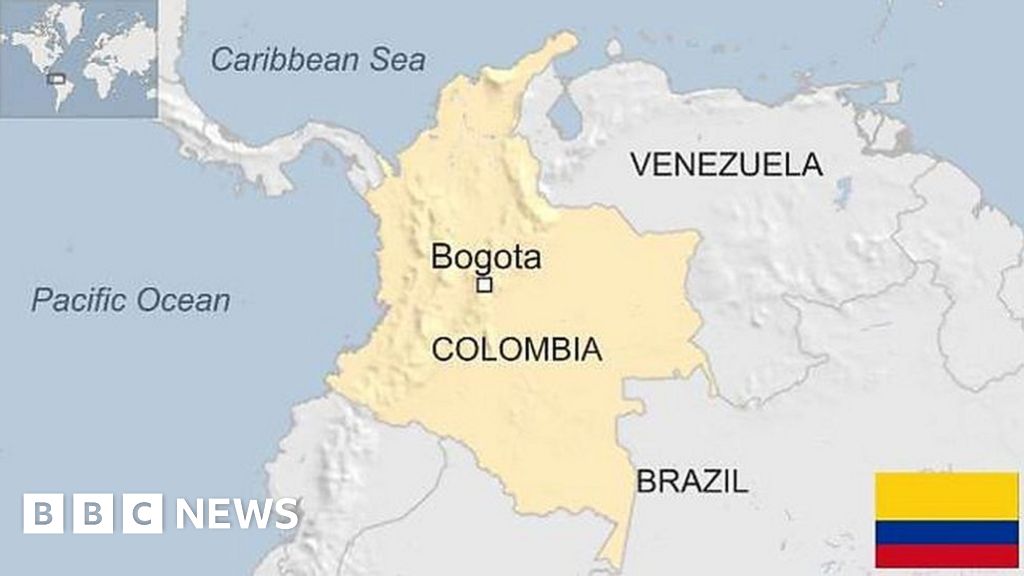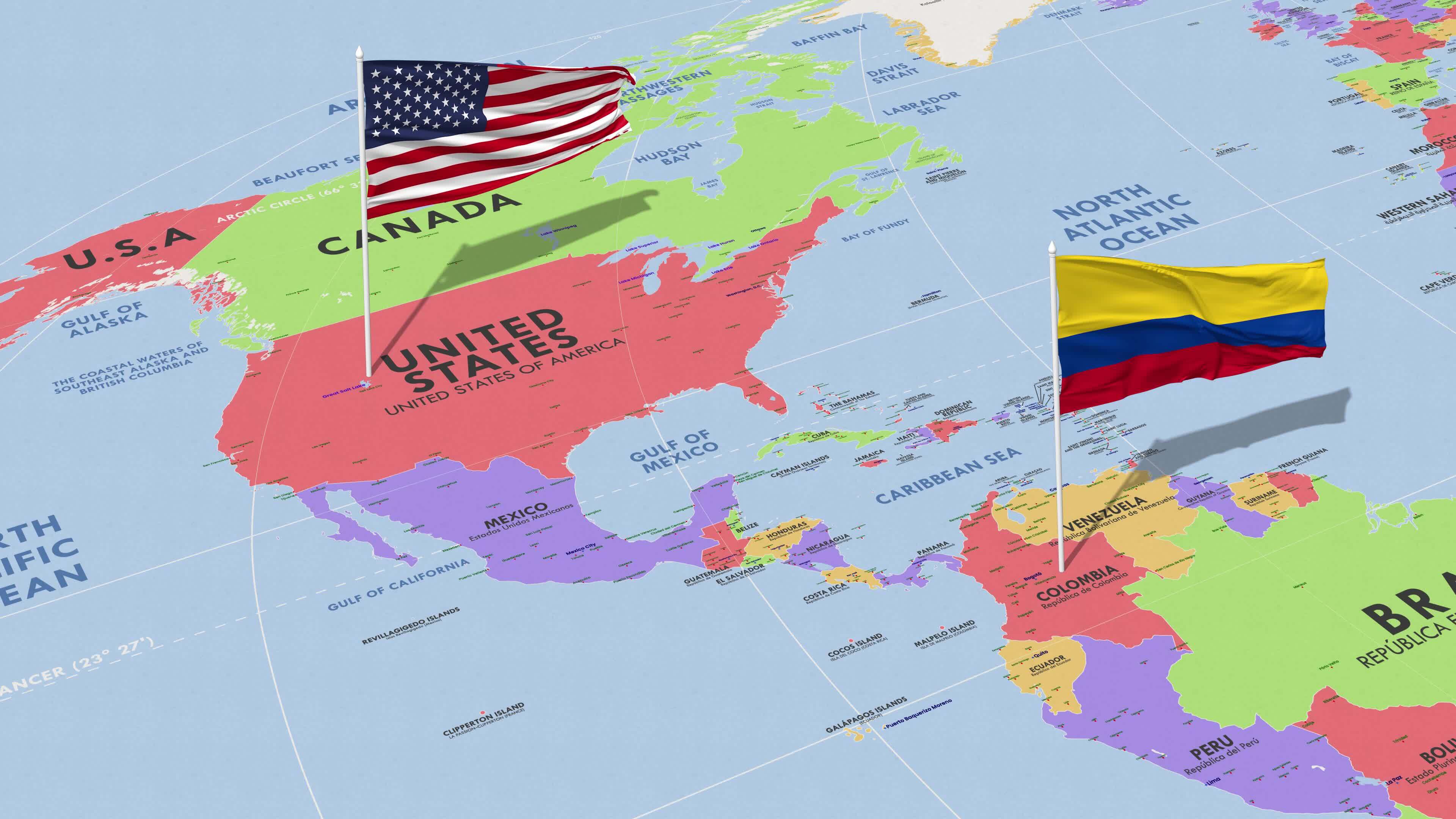Size Of Colombia Compared To Us

Colombia, a nation brimming with biodiversity, vibrant culture, and a burgeoning economy, often finds itself compared to its northern neighbor, the United States. This comparison, however, requires a careful understanding of the vastly different scales involved. At the heart of this analysis lies a fundamental question: how does the geographical footprint of Colombia measure up against the expansive landscape of the United States?
Understanding this size difference is crucial not only for geographical context but also for grasping the disparities in economic power, resource availability, and overall geopolitical influence. This article delves into a comprehensive comparison of the two countries, utilizing data from reputable sources like the World Bank and the United Nations, to paint a clear picture of their relative sizes and the implications thereof.
A Matter of Scale: Land Area Comparison
Colombia boasts a land area of approximately 1,141,748 square kilometers (440,831 square miles). This makes it the 26th largest country in the world. The United States, on the other hand, covers a staggering 9,833,520 square kilometers (3,796,742 square miles), making it the third-largest country globally.
To put this in perspective, the United States is roughly 8.6 times larger than Colombia. This vast difference in land area has profound implications for both nations.
States That Outsize Colombia
The sheer scale of the United States becomes even more apparent when comparing individual states to the entire country of Colombia. For example, Alaska, with its massive 1,717,856 square kilometers (663,268 square miles), is significantly larger than Colombia.
Texas, clocking in at approximately 695,662 square kilometers (268,596 square miles), is only slightly smaller, yet still holds substantial landmass. Even a collection of several smaller states could collectively surpass Colombia's total area.
Population Density and Distribution
While land area provides a broad overview, population density offers a more nuanced understanding of how people interact with the landscape. Colombia has an estimated population of around 52 million people.
The United States, with a population exceeding 330 million, is far more populous. However, the distribution of people within each country varies significantly.
Colombia's population is largely concentrated in the Andean region and along the Caribbean coast, while vast areas of the Amazon rainforest remain sparsely populated. The US population is more evenly distributed, though with higher concentrations in coastal areas and major metropolitan regions.
Economic Implications of Size
The vast disparity in size between Colombia and the United States translates into significant differences in economic capacity and resource endowments. The US, with its extensive landmass, benefits from abundant natural resources, including oil, natural gas, coal, and arable land.
This has historically fueled its economic growth and industrial development. Colombia, while also rich in resources like coal, emeralds, and coffee, possesses them on a smaller scale and faces challenges in efficiently exploiting them.
Furthermore, the US boasts a significantly larger and more diverse economy, supported by advanced infrastructure, technological innovation, and a highly skilled workforce. Colombia’s economy, while growing, is still developing and faces challenges related to infrastructure limitations, income inequality, and security concerns.
Geopolitical Influence
The size and economic power of the United States naturally translate into greater geopolitical influence on the global stage. The US plays a dominant role in international organizations, trade agreements, and security alliances.
Its military strength and economic leverage allow it to shape global events and exert influence over other nations. Colombia, while a significant player in Latin America, has a more limited geopolitical reach.
It actively participates in regional organizations and seeks to promote peace and stability in the region, but its influence is largely confined to the Western Hemisphere.
Environmental Diversity and Conservation
Both Colombia and the United States are incredibly biodiverse countries, but the sheer scale of the US allows for a wider range of ecosystems and climatic zones. From the Arctic tundra of Alaska to the deserts of the Southwest and the tropical rainforests of Hawaii, the US encompasses an unparalleled range of natural environments.
Colombia, despite its smaller size, is recognized as one of the world's megadiverse countries. Its geographic location at the intersection of several biomes – including the Amazon rainforest, the Andes mountains, and the Pacific and Caribbean coasts – contributes to its exceptional biodiversity.
Both nations face significant challenges in protecting their natural resources and mitigating the impacts of climate change. Conservation efforts are crucial in both countries to preserve their unique ecosystems for future generations.
Looking Ahead
The size difference between Colombia and the United States will continue to shape their respective trajectories in the years to come. The US will likely maintain its position as a global superpower, leveraging its economic and military strength to exert influence worldwide.
Colombia, on the other hand, will likely continue its path of development, focusing on strengthening its economy, improving its infrastructure, and promoting social inclusion.
While the United States may continue to cast a long shadow on the international stage, Colombia's unique cultural heritage and strategic location offer it opportunities to play an increasingly important role in Latin America and beyond. Recognizing these differences and understanding their implications is crucial for fostering constructive dialogue and collaboration between the two nations.

